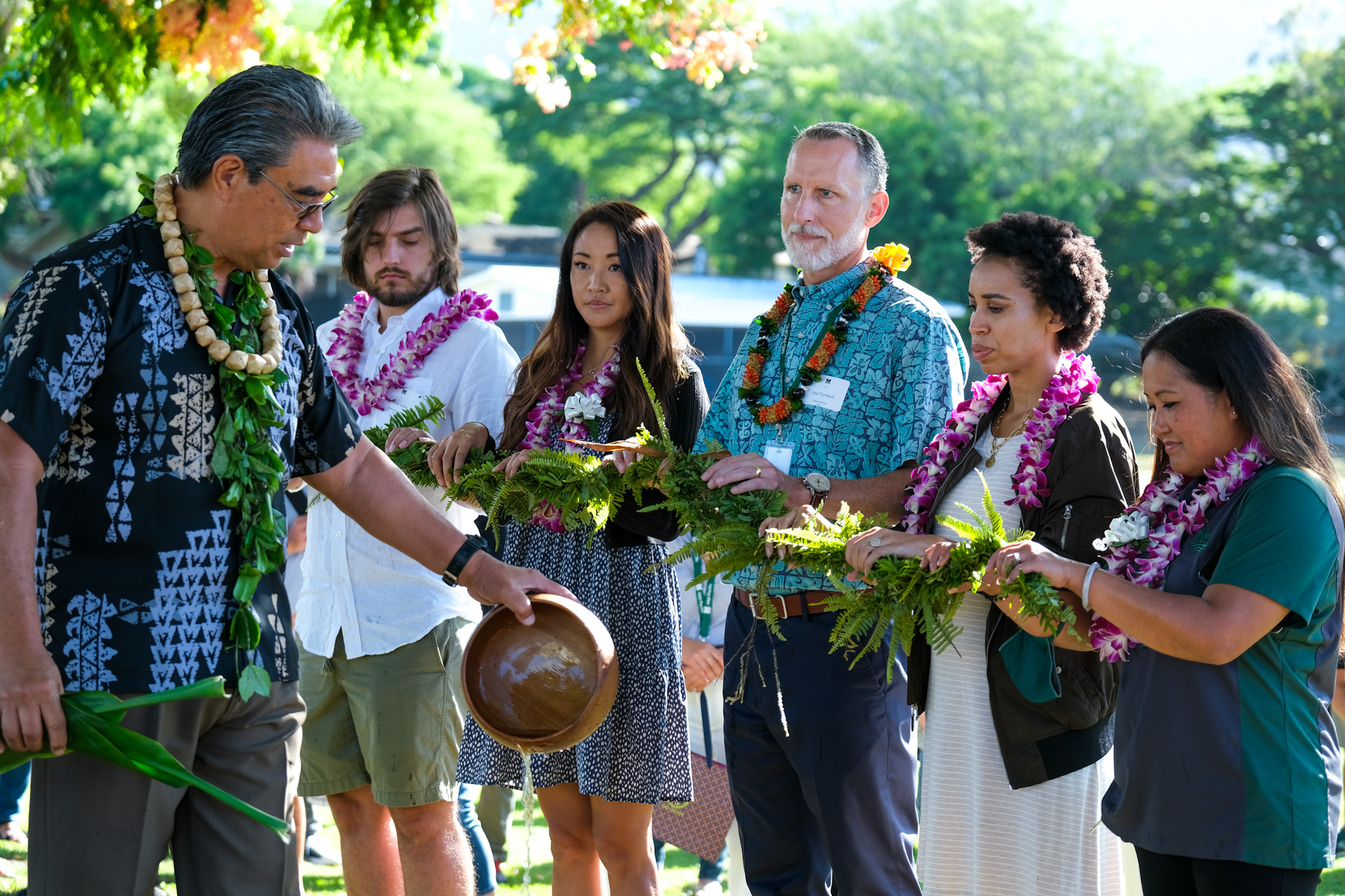View this article in Chinese | Japanese | Korean*
*Translation provided by the Mid-Pacific Student Translator Committee:
Kosuke Doyama (Crosby), Rina Doyama, Riko Hashimoto, Hina Hayashi, Harang Kim, Kokoro Kuramochi, Jaegu Lee (Tony), Shuang Liang (Archer), Jia Liang Lin (Kai), Youngje Park, Junsei Tanizaki, Sydney Woolley
AS THE PRESIDENT OF MID-PACIFIC, I often find myself in the happy circumstance of explaining why our school can claim a unique position within Hawaii’s educational community. As the first school in the state to implement many innovative programs, our position transcends our successes as a school of the arts, a school that broke the one-to-one iPad barrier, the first school to offer International Baccalaureate studies, or a school with an internationally renowned early childhood education program. The Mid-Pacific community—students, teachers, families and alumni—is composed of gifted, thoughtful, creative, individuals who represent communities in Hawai’i, the U.S. mainland, and destinations from around the world.
As innovators, artists, and individuals we continue to break the mold of a traditional independent school because we believe in creating an environment that best reflects the world in which our students will learn to thrive as adults. As a result, our students have access to courses in entrepreneurship and sustainability, as well as local museums and nonprofits that enmesh academic learning with the world that awaits them. They also have access to the. Mid-Pacific Immersive Technology Program—the only program of its kind in the United States and a program that was the subject of a Microsoft White Paper on immersive technology in 2019.
But we are more than a list of accomplishments. Mid-Pacific is a school with a compelling origin story that celebrates the strength of an inclusive community. We continue to represent a vision that began in 1892, when our co-founder Francis Damon declared that Mid-Pacific could play an important role as a community leader in Hawai’i and around the world. His view of promoting international understanding through education was hand-in-hand with his dream of creating a school with a rich diversity of opinions and ideas. As Helen Pratt wrote, Mr. Damon’s “passionate expressions of his belief in the important part a … school [like Mid-Pacific] could play” in achieving such a dream was beyond innovative.
Today, the vision of our founders and those who followed is embodied in a poignant phrase: E kūlia kākou: Let’s strive and aspire together. Together, we continually demonstrate the perseverance necessary to continue Mr. Damon’s vision throughout the remainder of the 21st century, from developing first-to-market programs, to overcoming the steep challenges of the 2020 pandemic. We continue to believe that Mid-Pacific is stronger through inclusivity than exclusivity. E kūlia kākou is our call to action, reminding us that while we act as one, our strength actually comes from our diversity of thoughts and abilities. As a result, Mid-Pacific is stronger than its component parts because it represents a community of innovators, artists, and individuals.
This publication holds many stories that illustrate the embodiment of a truly innovative school, as well as the continuation of Mr. Damon’s dream. I invite you to enjoy the articles that follow, and to learn more about the next step on our journey.
E Kūlia Kākou,
Let’s strive and aspire together
Paul Turnbull, Ph.D.
President

